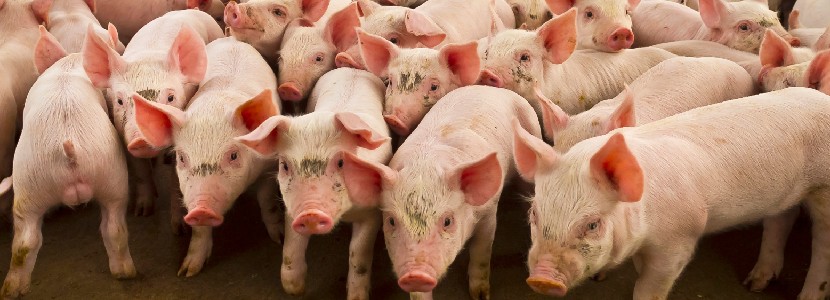Lipid nutrition in pigs is a matter of interest at different levels. Historically, the use of lipids for pig nutrition has focused on the effects of dietary fat on yield during different stages of production.
For nulliparous sows and sows during late gestation and lactation, focus has been set on to the influence of lipid supplementation on milk production, lipid content in milk, and piglet yield and viability (Verstegen et al., 1998).
On the other hand, efforts have been set on the digestibility and energy value of lipids and in manipulating pigs’ nutritional quality, emphasizing on fatty acid (FA) composition in order to comply with human health recommendations. (Jakobsen, 1999; Wood et al., 2004).
Short-chain fatty acids (SCFAs, i.e., acetate, propionate, butyrate), which can be added as food additives, are produced through microbial fermentation of indigestible carbohydrates and starch in the hind gut. With the added benefit of energy contribution for the host (Sciascia et al. , 2016).
- It should be noted that energy absorption is much higher from glucose than from SCFAs (Bach Knudsen, 2011); however, SCFAs are a bioavailable energy source for colonocytes.
Lipid digestibility in pigs
Digestion, absorption and metabolism of dietary lipids are affected by their fatty acid composition, and more specifically, the degree of saturation and length of the chain. The position of fatty acids within the TG molecule also has an influence.
In general, unsaturated lipids are more digestible in pigs than saturated lipids. This can be attributed to the possibility of lipase accessing TGs, (Ravindran et al. 2016).
- Therefore, long-chain saturated fatty acids (LCFAs) can exert inhibitory effects and unsaturated LCFAs can increase lipase activity and thus influence lipid digestion.
[register] Fatty acids with a chain length of 12 carbons (C) or less will be absorbed through portal blood circulation, while fatty acids with a chain length of 14 C or higher will be absorbed through the lymph. Therefore, FAs with 6 to 12 C, which are naturally found in the form of medium-chain saturated fatty acids (MCFA) in milk fat and some sources of vegetable fat, such as coconut and palm kernel oils, represent immediately available energy sources.
The digestibility of dietary lipids can be assessed by determining apparent or true digestibility. Which is obtained by quantifying the difference between ingested lipids in food and that of excreted lipids within feces. This gives an estimate of the amount of digestible lipids coming from the diet due to the exclusion of endogenous fat losses.
Endogenous loss occurs due to the loss of bile acids, flaky cells, structural mucosal lipids and cholesterol. It can vary not only due to dry matter intake but also with the source and level of lipids found in the diet (Kil et al., 2010).
Besides, the addition of lipids in diets can improve protein digestibility due to the slower intestinal passage rate of lipids. This contrasts with the effect of fiber (Kil et al., 2010).
Benefits of lipid inclusion in pig diets
- It can be even more challenging at the time of weaning and especially when piglets are weaned at a young age or underweight.
During the period that follows after weaning, piglets may present reduced activity of enzymes that are important for the digestion and hydrolysis of TGs from dietary TGs.
Other dietary strategies to improve FA transfer could involve adding emulsifiers to diets so that a bridge is formed between water and fat-soluble materials, leading to better fat utilization.
Nutritional emulsifiers include lecithins and monoglycerides and diglycerides. Lecithin is a complex mixture of several species of surface active phospholipids, consisting of hydrophobic and hydrophilic portions. It has drawn great interest for its potential use to improve fat digestibility and energy efficiency in pigs and broilers (Upadaya et al. , 2019);
- However, the effects obtained seem to depend on the physiological state of the pig. i.e. young pigs or pigs with compromised intestinal function may obtain greater benefits from the supply of natural lecithin than older or more mature pigs.
Conclusion
Lipid nutrition encompasses a wide range of bioactive fatty acids that may offer beneficial effects for pigs.
Lipids (SCFA and MCFA) have promising antibacterial activities and can supply immediate energy to the host. In contrast, the digestion and absorption of LCFAs are more complex. However, these FAs exert bioactive effects that are important for inflammatory reactions.
[/register]
Continue reading “Effect of fatty acid feeding on sows’ milk”
Source: Lauridsen, 2020
